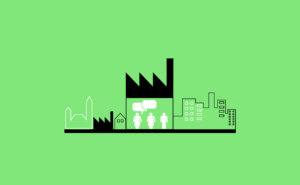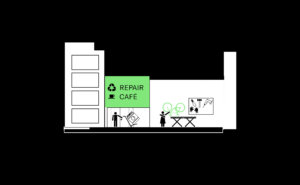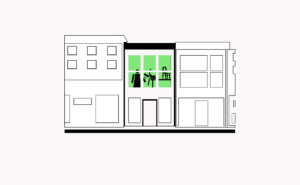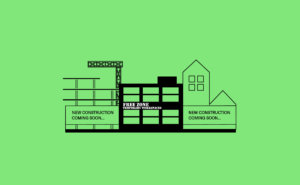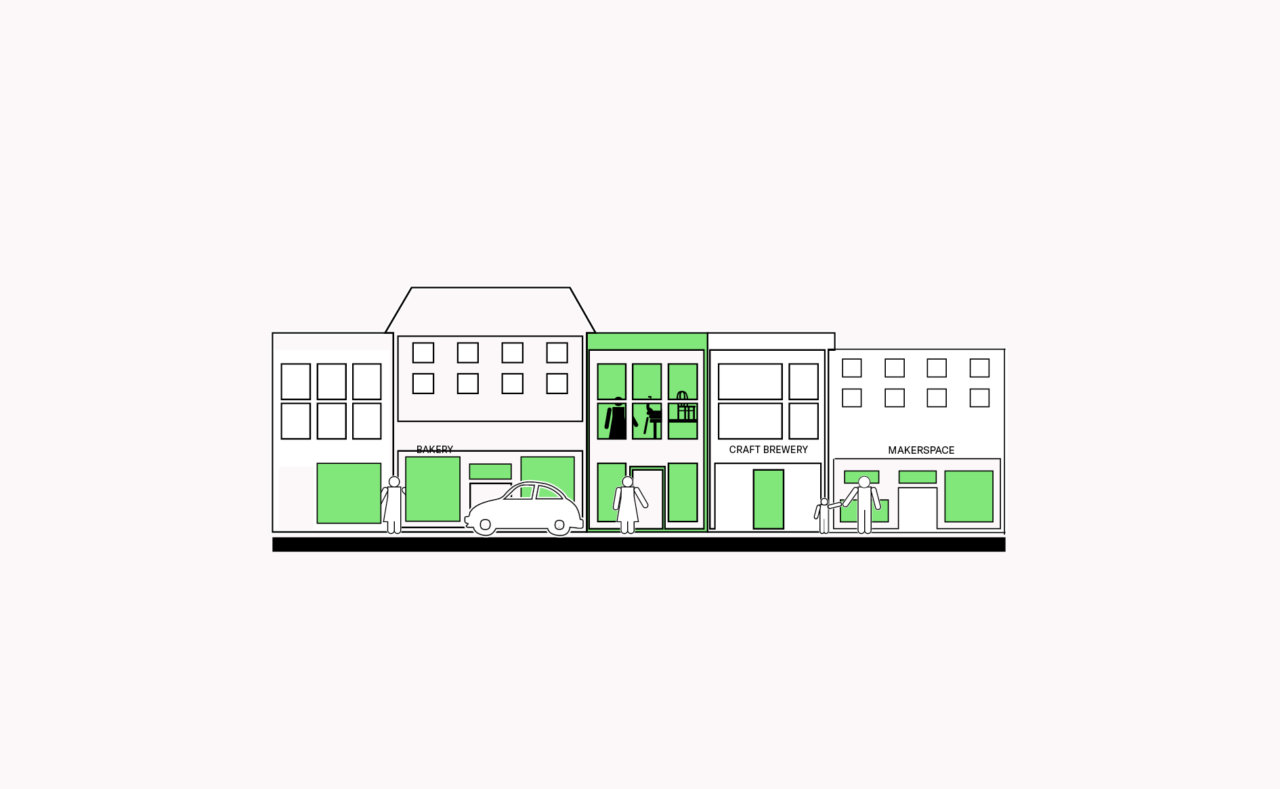
N.10 Making Along High Streets
Concentrations of mixed use activities along high streets can take advantage of the best regional accessibility and the highest amount of pedestrian flows, enhancing visibility.
[Context] High streets are roads which traditionally concentrated trade, institutions, cultural spaces and mobility. These spaces linked urban centres, infrastructure (like a port) or a significant destination (like a church or market) and therefore concentrated traffic flows while being the main thoroughfare to other parts of the city. Over time they have evolved into the city’s commercial districts and are the obvious destination for residents to not only acquire goods but also to socialise. Consequently inner-city land on and beside high streets is often very expensive and highly prized. Their position as social and mobility spaces provides opportunities and challenges. While there are advantages in manufacturing along high streets, with high intensity of use, they can also suffer from congestion and higher land prices. Changing consumer patterns led particularly by online shopping have dramatically reduced footfall and business for traditional ‘bricks and mortar’ retail, leaving some high streets largely vacant and reducing rental value. This opens up opportunities for small businesses, combining retail, services and manufacturing. Small-scale, public facing manufacturing can be very complementary to retail as it can be a spectacle and create emotional value of locally made products.
[Problem] One of the main challenges of high streets is that they are highly accessible on the local and city scale. This leaves them exposed to congestion which can be problematic for logistics and the production or delivery of bulking goods. By contrast, former high street retail spaces, those affected by changing local economic conditions, are prone to being transformed into dwellings. Housing can fetch moderate returns, yet public authorities should be cautious about allowing this as it is difficult for the space to be reconverted back into retail (or manufacturing) if needed. Switching between retail, office space and manufacturing is far easier.
[Forces] Shifts in economic conditions can change the potential for manufacturing to be part of high streets. In healthy conditions for traditional local retail, manufacturers and artisans would struggle to afford space on high streets. In current conditions, where retail is constantly evolving into larger physical spaces or online shopping, smaller shops are struggling to survive. But this does not simply open the door to other possible land uses, like manufacturing. Building owners are also uncomfortable about lowering rental prices for new activities, even if there is a demand for the space. P.4 Meanwhile Spaces and Transitional Use could help soften the blow for concerned building owners who are faced with losses. Where the transformation of high streets moves from retail into mixed land uses (including manufacturing), it is important to retain some of the basic conditions of a high street and create a ‘shop-front’. Businesses should provide a B.3 Public Face and avoid blind façades. This can help maintain or create a N.8 Quality Urban Environment in Making Areas. Manufacturing activities on high streets need a practical solution for loading goods and parking trucks without effecting pedestrians.
[Solutions] Where opportunities are available, ensure that the local manufacturing on high streets is used advantageously while avoiding nuisances that affect neighbouring retail or commercial businesses. Manufacturing can be mutually beneficial for retail, gaining from the spectacle of artisans and manufacturing. A R.3 Curator can play a key role when integrating manufacturing in high streets, through C.2 Negotiated Qualities & Environmental Criteria to provide opportunities for dialogue and exchange amongst all actors concerned with activities along high streets (sometimes the responsibility of a local chamber of commerce). C.4 Diverse Tenure Models can help provide space along high streets. Likewise a C.3 Balance Between Public & Private Land ensures that alternative land uses can occur and results in diversity, particularly where land prices prohibit suitable diversity to occur naturally. Retail oriented high streets, particularly where land is affordable, could provide space for crafts and artisans to be located above shops (such as the P.5 The Work Home) or in the N.11 Back of the High Street and link bespoke manufacturing with retail. Furthermore, while retail and services have traditionally grown together, diversity could be improved by N.3 Mixing Complementary Making & Related Services. Opportunities could be developed for integrating N.5 Local Collection Points of Segregated Waste, P.6 Re-use & Repair Centres. Due to accessibility, high streets can be a good place for people of different backgrounds and cultures to meet, to accommodate P.7 Spaces for Development & Education as well as P.8 Community Hub for Making Locations. Finally, a change in legislation may be a precondition to allow new functions (such as light manufacturing) in areas zoned for retail.
[Contribution] Add contributions here.
